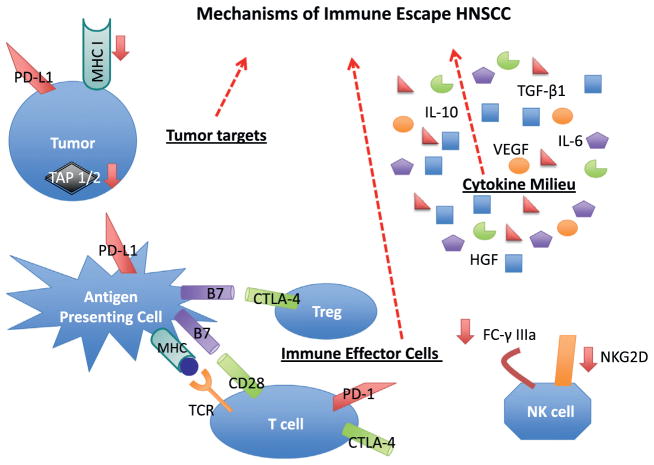Figure 1.
Mechanisms of Immune Escape in HNSCC. A mechanistic understanding of HNSCC immune escape reveals potential targets for immunotherapy: (1) HNSCC tumors down-regulate antigen processing (TAP 1/2) and presentation (MHC 1). Tumors also commonly express PD-L1, the ligand for the immune checkpoint receptor PD-1. (2) The HNSCC microenvironment is characterized by an excess of immunosuppressive cytokines (e.g. TGF-β1, VEGF, IL-6 and IL-10) and a deficiency of immunostimulatory cytokines (e.g. IFN-γ). The cytokine milieu is influenced by imbalanced STAT1/STAT3 signaling. (3) Effector T cells receive negative feedback from immune checkpoints (CTLA-4, PD-1), co-inhibitory receptors which promote pathologic immune tolerance in the setting of HNSCC. Regulatory T cells also promote immune tolerance through CTLA-4 signaling. Down-regulation of NK cell receptors such as NKG2D and Fc-γ IIIa inhibits innate immune responses, including ADCC.

